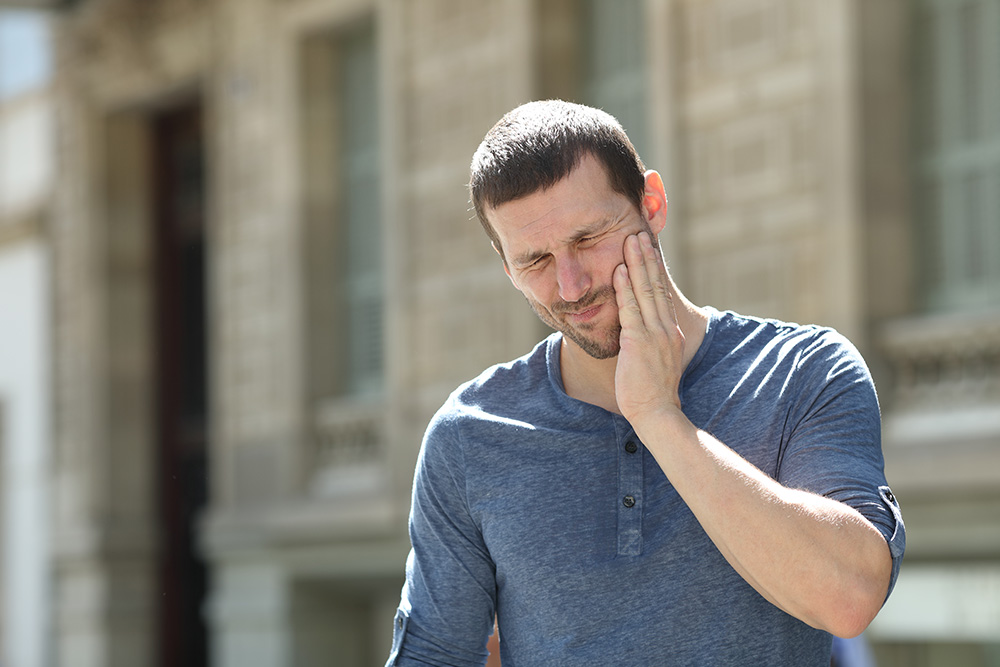TMD Treatment

Every day, millions of Americans suffer from debilitating chronic headaches, face pain, jaw pain, and neck pain. In many cases, these types of symptoms can develop due to an underlying temporomandibular disorder (TMD).
What Is TMD?
Simply called TMD, temporomandibular disorder refers to several different problems, disorders, and dysfunctions with the temporomandibular joints (TMJs). The TMJs are the joints that connect the lower jawbone to either side of the skull. These joints function as crucial parts in moving the jaw up and down and side to side.
Signs and Symptoms of TMD
TMD causes a host of painful symptoms that can make it difficult for a person to chew, speak, or yawn. While a person might experience just one symptom, it’s more common to suffer from a combination of the following signs and symptoms of TMD:
- Frequent headaches and/or migraines
- Clicking or popping sound when moving the jaw
- Grinding sensation in the TMJs when moving the jaw
- Lockjaw or TMJ stiffness
- Jaw, face, and neck pain
- Earaches
- Ringing ears (tinnitus)
- A stuffy feeling in the ears
- Muscle spasms in the jaw area
- A change in the alignment of the top or bottom teeth
What Causes TMD?
TMD is often caused by excessive strain on the temporomandibular joints. A variety of factors and underlying issues can contribute to excessive strain, such as:
- Malocclusion (overbite, underbite, crossbite, functional shift, etc.)
- Bruxism (clenching the jaw or grinding the teeth).
- Many patients who have sleep apnea often have night time bruxism and TMD discomfort.
- Clenching, daytime or nighttime.
- Injury or trauma
- Condylar resorption
- Physiological issues with the arrangement of the temporomandibular joints
- Degenerative diseases such as osteoarthritis or rheumatoid arthritis
Other Factors That Can Cause TMD-Like Symptoms
It is possible to experience headaches, jaw pain, facial pain, and other symptoms similar to TMD without actually having anything unusual or wrong with your temporomandibular joints. Certain habits and behaviors can actually result in jaw pain and stiffness.
If you experience TMD-like symptoms but do not have TMD, the following tips can help you protect your temporomandibular joints and get relief:
- Relax your face by keeping your lips closed and teeth apart.
- Try not to grind your teeth or clench your jaw.
- Do not chew gum.
- Chew food evenly on both sides of your mouth.
- Do not cradle phone receivers between your head and shoulder.
- Do not rest your chin in your hand.
- Practice good posture with your head up, back straight, and shoulders squared.
Simple overuse of the temporomandibular joints or putting too much pressure on these joints can lead to pain in your daily life.
TMD Diagnosis and Treatment With Our Dentists in Bucyrus
If you suffer from the pain and discomfort associated with TMD, we strongly encourage you to schedule a consultation with Dr Attila and Dr Michelle Nagy at Oakwood Dental.
We can talk with you about your symptoms, perform a thorough physical examination, and take any necessary diagnostic images to determine the underlying cause of your pain. Depending on our findings, we can then recommend a comprehensive treatment plan designed to help you find relief.
To learn more or schedule an appointment, we welcome you to contact our dental office in Bucyrus today.
